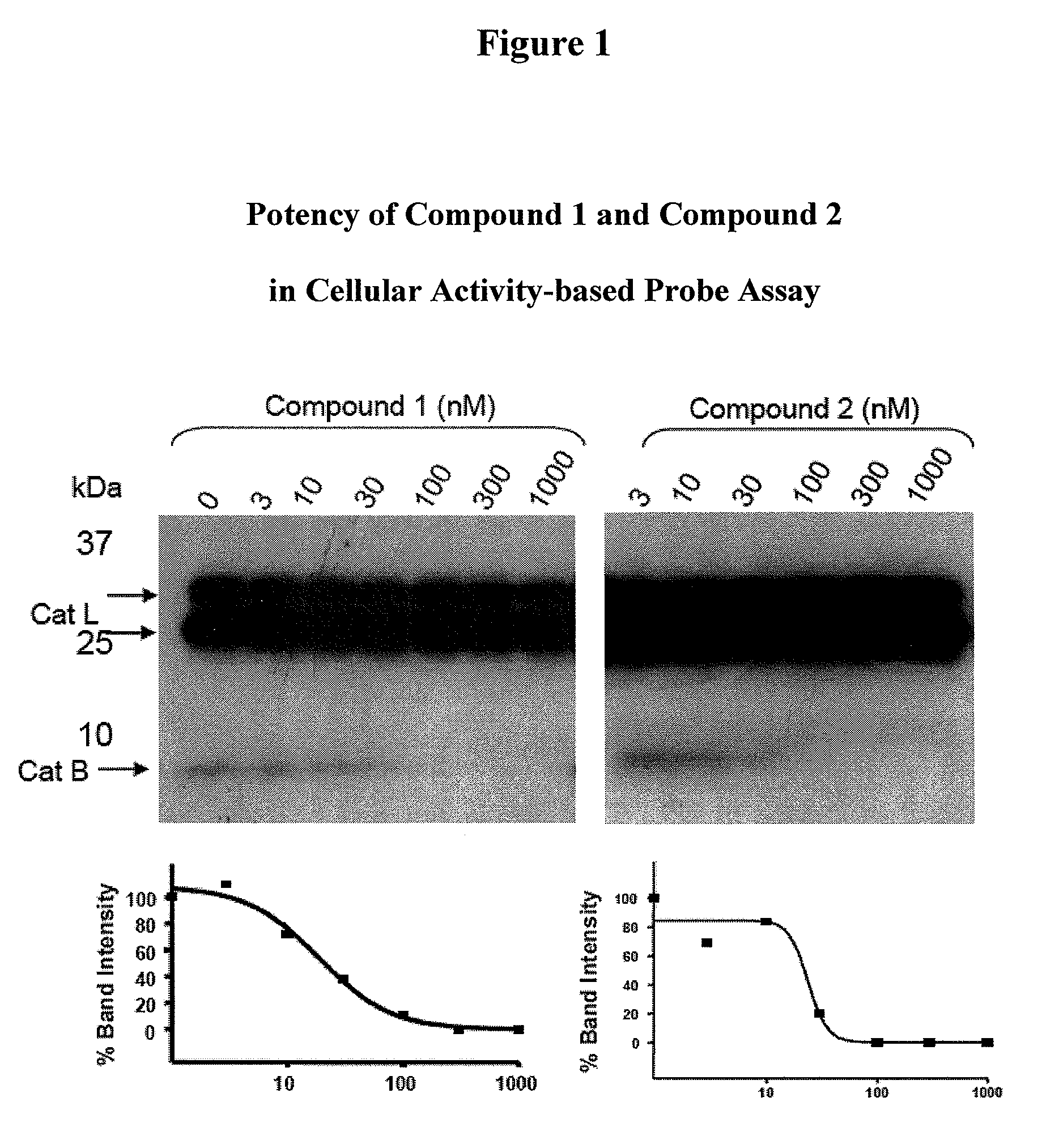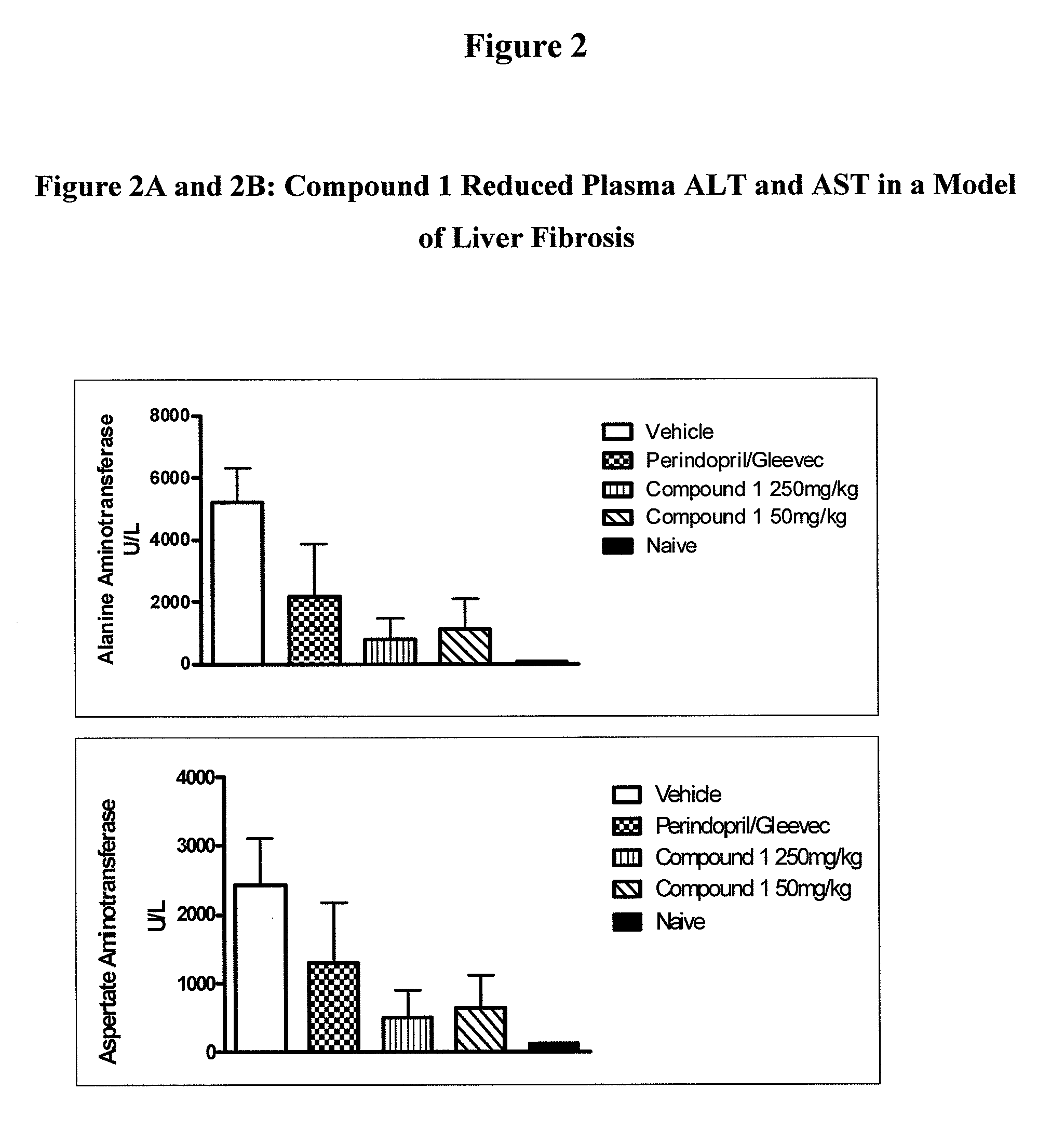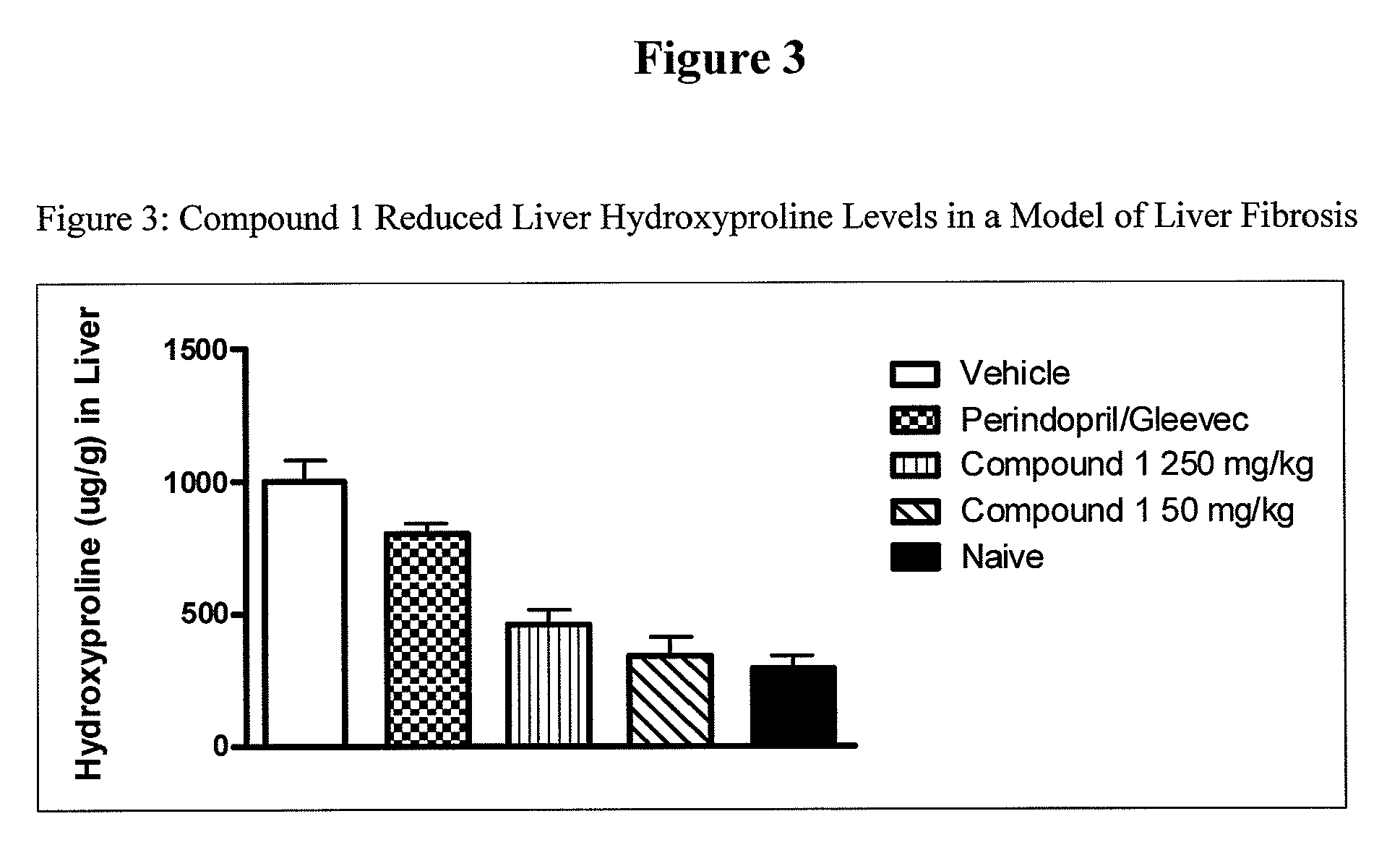Inhibitors of cathepsin b
a technology of cathepsin and inhibitors, which is applied in the direction of drug compositions, peptide/protein ingredients, metabolic disorders, etc., can solve the problems of progressive liver fibrosis, pathological consequences, and the activeness of cysteine proteases, and achieve the effect of inhibiting cathepsin b activity
- Summary
- Abstract
- Description
- Claims
- Application Information
AI Technical Summary
Benefits of technology
Problems solved by technology
Method used
Image
Examples
example 1
Synthesis of (2S,4R)-1-((S)-(3-tert-butylureido)-3,3-dimethylbutanoyl]-N-((S)-1-cyclopropylamino)-1,2-dioxohexan-3-yl)-4-(7-methoxy-2-(1H-pyrazol-1-yl)-quinolin-4-yloxy)pyrrolidine-2-carboxamide
[0187]
Step 1
[0188]To a solution of commercially available N-tert-Boc-cis-4S-hydroxy-L-proline methyl ester (370 mg, 1.51 mmol) and 7-methoxy-2-pyrazol-1-yl-quinolin-4-ol (PCT application publication No. WO 2000059929) (400 mg, 1.66 mmol) in dry tetrahydrofuran (15 mL) at 0° C. was added triphenylphosphine (594 mg, 2.27 mmol), followed by a slow addition of diisopropylazodicarboxylate (DIAD) (0.36 mL, 1.81 mmol) under N2. The reaction mixture was slowly allowed to warm to room temperature and stirred for 18 hours. The crude reaction mixture was then concentrated and purified by flash chromatography to give (2S,4R)-1-tert-butyl-2-methyl-4-(7-methoxy-2-(1H-pyrazol-1-yl)quinolin-4-pyrrolidine-1,2-dicarboxylate in 69% yield.
Step 2
[0189]To a solution of (2S,4R)-1-tert-butyl-2-methyl-4-(7-methoxy-2-...
example 2
Synthesis of (2S,4R)-1-((S)-(3-tert-butylureido)-3,3-dimethylbutanoyl]-N-((S)-1-cyclobutyl-4-(cyclopropylamino)-3,4-dioxobutan-2-yl)-4-(7-methoxy-2-(1H-pyrazol-1-yl)-quinolin-4-yloxy)pyrrolidine-2-carboxamide
[0196]
Step 1
[0197]Tert-butyl-(2S)-1-cyclobutyl-4-(cyclopropylamino)-3-hydroxy-4-oxobutan-2-ylcarbamate (51 mg, 0.165 mmol) was dissolved in dichloromethane (3.0 mL) and trifluoroacetic acid (3.0 mL) was added. After stirring for 1 hour at room temperature, the reaction mixture was evaporated to dryness to give (3S)-3-amino-4-cyclobutyl-N-cyclopropyl-2-hydroxy-butanamide trifluoroacetic acid salt as a white solid. A solution of (2S,4R)-1-((S)-2-(3-tert-butylureido)-3,3-dimethylbutanoyl)-4-(7-methoxy-2-(1H-pyrazol-1-yl)quinolin-4-yloxy)pyrrolidine-2-carboxylic acid in dichloromethane / N,N-dimethylformamide (1:1. 6.0 mL) was added to the (3S)-3-amino-4-cyclobutyl-N-cyclopropyl-2-hydroxy-butanamide trifluoroacetic acid salt followed by O (7 azabenzotriazol 1 yl) 1,1,3,3 tetramethyl-u...
example 3
Synthesis of (2S,4R)-1-((S)-2-(3-tert-butylureido)-3,3-dimethylbutanoyl)-4-(5-chloro-pyridin-2-yloxy)-N-((S)-1-cyclobutyl-4-(cyclopropylamino)-3,4-dioxobutan-2-yl))pyrrolidine-2-carboxamide
[0200]
[0201]To commercially available t-Boc-(2S,4R)-hydroxyproline (1 mmol) in dimethylsulfoxide was added potassium tert-butoxide (3 mmol) in small portions over 15 minutes at 23° C. The mixture was stirred at 23° C. for 30 minutes, then cooled to 0° C. before adding 2,5-dichloropyridine (1.1 mmol) in small portions over 10 minutes. The reaction mixture was stirred at 23° C. for 16 hours. The resulting suspension was poured into 5% aqueous citric acid and extracted with ethyl acetate. The combined ethyl acetate layers were washed with brine and dried over magnesium sulfate. The organic portions were filtered and concentrated under reduced pressure to give a white solid. The solid material was dissolved in 4.0 M HCl in dioxane (10 mL). After 1 hour, the reaction mixture was concentrated under redu...
PUM
| Property | Measurement | Unit |
|---|---|---|
| temperature | aaaaa | aaaaa |
| temperature | aaaaa | aaaaa |
| temperature | aaaaa | aaaaa |
Abstract
Description
Claims
Application Information
 Login to View More
Login to View More - R&D
- Intellectual Property
- Life Sciences
- Materials
- Tech Scout
- Unparalleled Data Quality
- Higher Quality Content
- 60% Fewer Hallucinations
Browse by: Latest US Patents, China's latest patents, Technical Efficacy Thesaurus, Application Domain, Technology Topic, Popular Technical Reports.
© 2025 PatSnap. All rights reserved.Legal|Privacy policy|Modern Slavery Act Transparency Statement|Sitemap|About US| Contact US: help@patsnap.com



